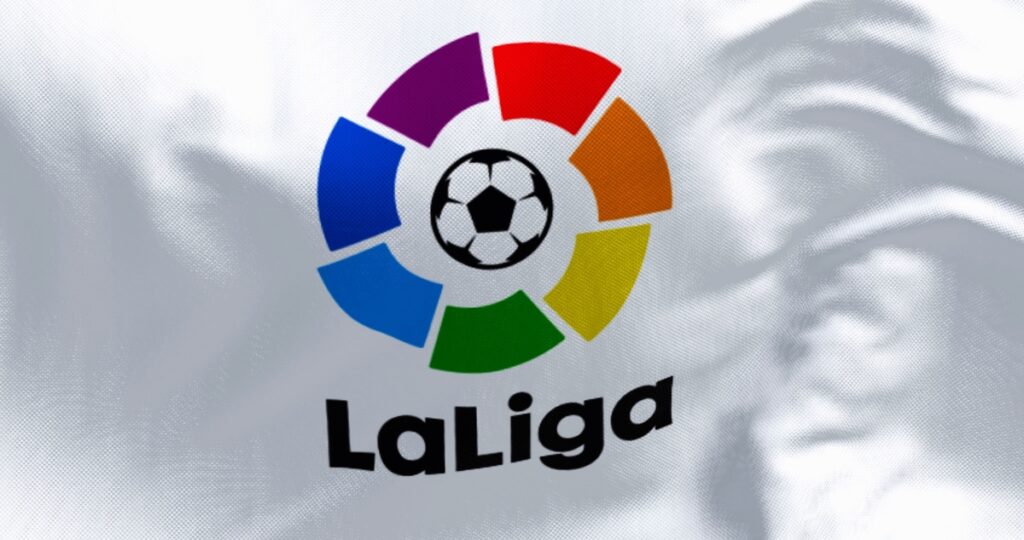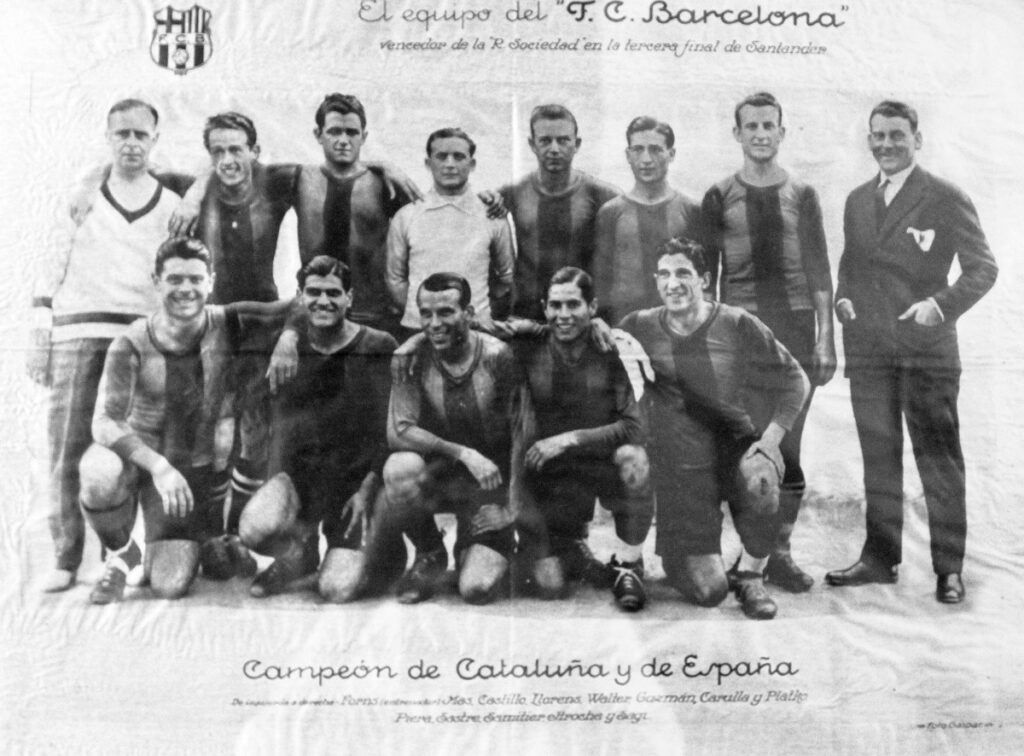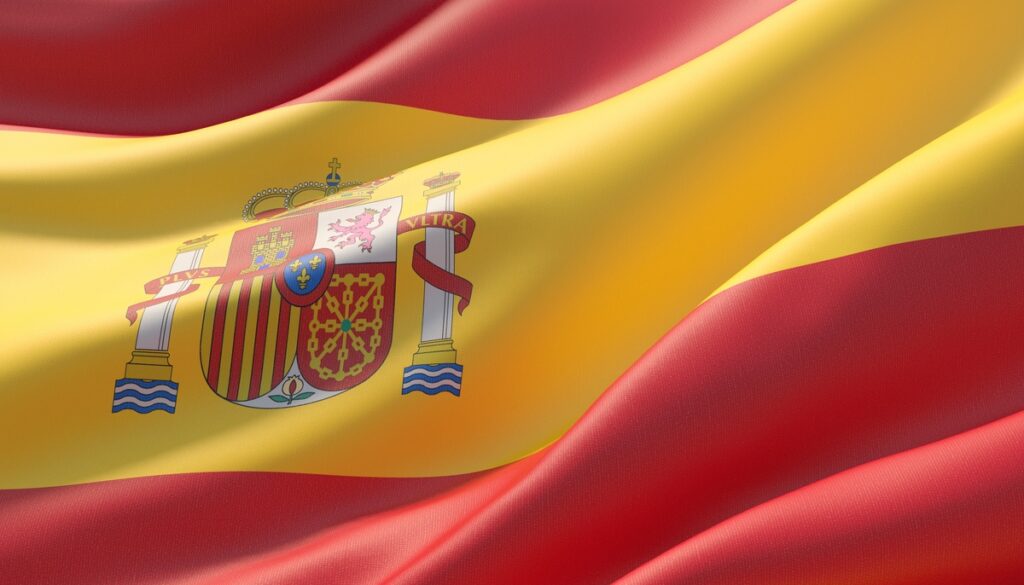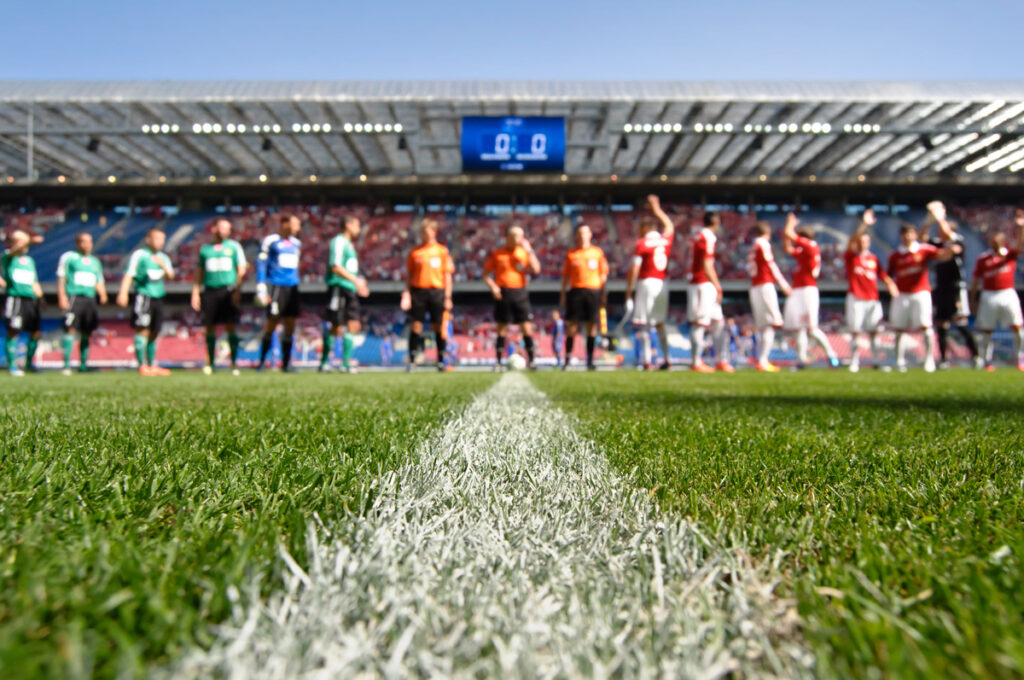La Liga, officially known as the Primera División, stands as one of the most prestigious football leagues in the world, captivating fans with its rich history and thrilling matches. Established in 1929, La Liga has evolved from its humble beginnings into a global phenomenon, showcasing some of the sport’s greatest talents and intense rivalries. At the center of this league lies the iconic clash between FC Barcelona and Real Madrid, known as El Clásico, which transcends football, impacting all the cultural and historical aspects of sports in Spain.
As we delve into the captivating journey of La Liga, we will explore its key milestones, legendary players, and the profound impact it has had on both Spanish society and the international football scenario. Join us as we delve into the triumphs and curiosities that have shaped La Liga into what it is today.
We will cover every aspect of its history, including the main La Liga clubs and their impacts on the world sports scenario. Make sure to take a look at each item below, and you’ll become an expert on the matter, whether you’re a football fan or dreaming of becoming a professional player in the Spanish football league one day. Here’s everything you need to know about La Liga’s history:
Table of Contents
The Excellence of La Liga

As you might know, La Liga is the Spanish club football league, featuring the biggest names in the country regarding the sport and also a reference worldwide for excellence and quality. Each La Liga season attracts millions of fans from all over the world to watch the games, whether in real life going to the stadiums or through TV and internet broadcasts.
La Liga history was responsible for producing some of the most iconic moments in the story of the sport and redefined football and entertainment as we know it today.
If you like football, this competition is a must-watch. The experience of watching the Spanish League, whether live or through the TV, is truly unique and unforgettable.
La Liga’s History: From First Steps to Nowadays

Now, we will explore what makes this league unique and important to the entire sports community. We will cover every aspect of it, including the main clubs that participate, its relation to the Spanish Civil War, and many other curiosities that will make you an expert on the matter.
Make sure to pay attention to each item below, and you will learn everything you need about one of the world’s most iconic competitions. Here’s a complete guide through La Liga’s history:
Early Steps as Campionat de Catalunya

Before the independence and creation of La Liga, the Catalan Football Championship was the country’s main league title. It was founded in 1901 and featured the main Spanish clubs playing against each other for the title. It was a very solid competition, and people from all over the country would gather to watch the thriving matches, limited by the technology and knowledge of the time.
It is important to note that, even though it was the main football tournament in the country, it wasn’t considered the first division. It was simply a championship to provide entertainment and help spread the passion for football throughout the country.
The championship was founded in 1901 and has existed for many years, with its last edition in 1940. During this period, some of the leading leagues in the world participated, including both Barcelona and Atletico Madrid. It was the early step for Spain to become one of the world’s central countries when it comes to football, revealing talents that would mark the sport forever.
Foundation and Planning
After the success of the Catalan Championship and the popularity of football in the country, José María Acha proposed the creation of a national league for Spain. This proposal was formulated in 1928, one year before the tournament’s first season.
There were a lot of discussions regarding how it would work, how many teams would participate in the league, and many other aspects. After numerous debates, the Real Federación Española de Fútbol agreed on the ten teams that would feature the “primera división” or first division.
The first teams to compose the league were Arenas, Athletic Bilbao, Barcelona, Real Madrid, Real Sociedad, and Real Unión. They were selected since they were the previous winners of Copa del Rey, an important tournament in the country. Along with them, Atlético Madrid, Espanyol, and Europa also featured in the first division as they qualified as runner-ups. With this, the roster of the first La Liga teams was settled.
One curiosity is that, among all these teams, only Athletic Bilbao, Real Madrid, and Barcelona were never relegated to Segunda División. Even after almost a decade, they are still some of the best teams in the world and a challenge for any other club trying to win the desired league titles.
First Season and First La Liga Winners

As we mentioned, the first season of La Liga happened in 1929 and was a major achievement for the entire country. It gave the fans a glimpse of what this huge tournament would become, being a symbol of football passion and Spain’s power when it comes to sports. It was the first edition, and even though it featured top-notch technology and features for its time, it was far from what we’re used to seeing nowadays.
One of the main differences between the competition now and then is the number of teams participating. The first edition had only ten teams competing for the trophy, which is very different from most championships like the European Cup or the Premier League, which feature 20 teams.
It is probably no surprise to anyone, but the first winner of La Liga was Barcelona. Even almost a century ago, the team was already one of the leading clubs in the entire country, even without Messi, Iniesta, and some of the prominent names that marked the club’s history in the last few years. Barcelona is famous for dominating almost every competition, like the Champions League and many others, and La Liga is no exception. The first edition was their first win, but it is far from the only one.
Athletic Bilbao’s Amazing Campaign
Even though Barcelona took the first trophy and Real Madrid’s two consecutive victories were a highlight of the tournament’s early days, the decade was marked by Atheltic Bilbao’s fantastic performance in numerous years, collecting more awards than any other team. The team dominated the 30s and was a force of nature, winning the editions of 1930, 1931, 1934, and 1936.
Not only that, but their game was on another level. They made matches look easy, and their defense was a nightmare for any opposing team trying to take them out of the competition.
Athletic Bilbao also achieved the most significant victory in La Liga’s history, destroying Barcelona in a game that ended 12-1.
The 30s were their age, and their display of abilities and strategic knowledge was on another level. They impacted the entire competition and helped shape numerous aspects of it. It was the beginning of Spanish highlights that helped draw a lot of attention to the competition in the early days.
Spanish Civil War and Its Impact on the League’s History

The competition is marked not only by happy memories but also by turbulent events. One of the main ones was the Spanish Civil War, which stopped the tournament and temporarily suspended Primera División.
The military conflict started in 1936 and was a very violent time in the country, marked by oppression and uncertainty of the future. It lasted three years, officially ending in 1939.
During this period, the competition was officially suspended because of the violent environment spread throughout the country, where promoting the competition was dangerous for both fans and players. After three years, the competition resumed in 1940, more extensive and with even more visibility than before.
The inaugural season after the conflict was a significant landmark and had a big psychological effect on the population. The love for the sport and seeing the entire nation together once again cheering for their favorite teams helped bring back memories of good old times and helped people forget the sad events of the last years.
Reinauguration and New Protagonists
After the competition resumed in 1940, many things changed, including the protagonists of the decade. While in the 30s, we had a major winner that dominated the tournament, in the 40s, there was a bigger variety of important teams. Barcelona and Real Madrid were two of the most famous names and managed to win more trophies, but Valencia was another team that played a great campaign as well.
The three teams dominated the decade and developed unique strategies that impacted the entire Spanish football scene, creating new ways of playing and revolutionizing the league. Valencia was a small team before the war, struggling to get to La Liga. Still, after its reopening, it didn’t take long for them to show their abilities and captivate the entire continent with their talented players and display of abilities.
Sadly, it was the opposite for Athletic Bilbao. The team that once dominated the competition didn’t perform well, mainly due to the war. During the conflict, many of its major players went to exile in Latin America, but only a few returned, leaving the team with an uncertain future.
Thankfully, they managed to restructure themselves with new talents. Shortly after, they returned as one of the strongest teams in the competition, not being relegated once in almost a century.
Evolution Throughout the Years

Every edition of the competition brings new surprises, unpredictable results, and tons of emotions for everyone involved, whether you’re watching through the television or live in the stadium. La Liga is synonymous with excellence, being not only Spain’s main football tournament but also one of the most important events in the football world.
It evolved in numerous ways throughout the years, whether through technologies like live camera systems, VAR, or anything else, ensuring fair competition and the best experience possible for everyone.
We also saw the emergence of new teams and talents that revolutionized the sports world, whether through their excellent strategies or sharp skills. This all contributed to La Liga evolving every day a little more, becoming not only the major sports event in Spain but also one of the most important worldwide. Names like Luis Enrique and Vicente del Bosque marked the competition and left an undeniable mark in the world. All of that is just the beginning of this history.
La Liga is almost a century old, and there is still much more to see.
We saw the roster of 10 teams increase more every decade, reaching a total of 20 teams competing. These are just some of the evolutions in the scenario, and many more helped shape this universe, captivating more fans and spectators every edition.
Future of La Liga
It is safe to say that La Liga’s future is as bright as its last century of existence. Every new edition brings new sponsors, fans, and thousands of fans from all over the world to watch games live. It is a very successful project that is still growing every new year.
We can expect even more technologies and new talents to enter the competition. Football has become a global sport. With new social media platforms like TikTok, spreading this passion to new territories is an even easier task, gathering more visibility and revenue for the event organizers.
No doubt that La Liga will continue to be one of the most important sports events in the world and also a reference for any organization looking for inspiration when it comes to this kind of event. Expect to see even more memorable moments and unforgettable matches in this iconic tournament.
Records of La Liga

Now, we will cover some of the competition’s main records and who holds them. Each of these players and clubs made history with their amazing performances and outstanding gameplay.
Make sure to look at each one to learn more about their history and what makes them unique. Here are the main records of La Liga and who holds them:
Most Appearances
The first record we will cover is most appearances. Notice that this concerns only appearances in La Liga, so it doesn’t consider other competitions, like the Champions League, World Cup, or anything similar.
Many people think that Lionel Messi is the player with the most appearances, but even though he participated in hundreds of games, he is actually the ninth player with the most appearances. The record belongs to Andoni Zubizarreta. He played for almost two decades and was part of some of the biggest clubs in the tournament’s history, like Athletic Bilbao, Valencia, and Barcelona. He participated in a total of 622 games and is regarded as one of the most iconic goalkeepers of all time.
Here are some other numbers regarding number of appearances:
- Joaquín – 621 games
- Raúl Garcia – 609 games
- Raúl – 550 games
- Eusebio Sacristán – 543 games
- Paco Buyo – 542 games
- Sergio Ramos – 536 games
- Manolo Sanchís – 523 games
- Lionel Messi – 520 games
Most Goals
Another prestigious category in the history of La Liga is the record for most goals scored. This list features some of the most famous names in the football world that both older and younger players will recognize. Like the previous category, this regards only goals scored in La Liga games, and it doesn’t consider other tournaments, friendly games, or anything like that.
As many of you expected, the record for most goals scored in the competition’s history belongs to the GOAT himself, Lionel Messi. He scored 474 goals, many more than anyone in the event’s history. Even Cristiano Ronaldo didn’t stand a chance next to him when comparing this metric.
Some of the other players who scored the most goals in La Liga are:
- Cristiano Ronaldo – 311 goals
- Telmo Zarra – 251 goals
- Karim Benzema – 238 goals
- Hugo Sánchez – 234 goals
- Raúl – 228 goals
- Alfredo di Stéfano – 227 goals
Most Titles
The last record we will look at is the number of La Liga titles. This regards the clubs that won the competition most of the time and showed to be a constant team throughout almost a century when the tournament existed in the country. They left an undeniable mark in the football world, inspiring thousands of fans worldwide, whether through their exceptional abilities or innovative game vision and strategy.
Real Madrid is the biggest winner in La Liga’s history and holds the record for most titles. With its outstanding performance since the first decade of the competition, they have secured 36 trophies and are way ahead of anyone else, with almost ten trophies more than the second place on this list.
Some of the other clubs with the most titles are:
- Barcelona – 27 trophies
- Atlético Madrid – 11 trophies
- Athletic Bilbao – 8 trophies
- Valencia – 6 trophies
- Real Sociedad – 2 trophies
- Desportivo de la Coruña – 1 trophy
Curiosities About La Liga

Now, we will see some of the main curiosities regarding La Liga that even some of the biggest fans don’t know about. Make sure to take a look at each of the items below, and you’ll become an expert on the matter.
Whether you’re just passionate about the sport or want to learn more about the history of this iconic competition, this category is for you. Here are some of the main curiosities about La Liga:
La Liga’s Official Name
Did you know that the tournament’s official name is not La Liga? Well…at least since 2023. Due to sponsorship reasons, the championship is officially referred to as La Liga EA Sports.
The game development company is one of the competition’s main sponsors, so for official materials and reference, they can put their name next to the tournament’s.
This is very common, and we can see that in almost everything in the sports world, whether in stadiums, clubs, or anything else. This marketing strategy is beneficial for both parties, whether through the money invested or the visibility earned. Even though La Liga EA Sports is the official name, you’ll more likely see people referring to it simply as La Liga. The name itself doesn’t impact anything other than the money invested in the tournament. When it comes to the structure, rules, and other aspects, everything stays the same.
Number of Teams
Even though the tournament officially has 20 slots for the teams, this is far from the number of clubs that have already made a presence in the competition. Throughout its more than 90 years of existence, 62 teams already competed for the highly anticipated trophy, some of them for a single edition of La Liga and some of them throughout all seasons.
But did you know that, among these 62 teams, only nine of them won the competition? This is a tiny number and shows how strong the dominant clubs are. As mentioned, Real Madrid and Barcelona alone have over half the trophies. Whether for the strongest teams or for the one-season underdogs, the competition is stiff every season, and every match is full of surprises.
First TV Broadcasts

We are used to seeing broadcasts of almost every La Liga game on TV channels and online platforms, but do you know when this operation started? Live broadcasting is a difficult task that requires extensive equipment to work properly, investment, and capable professionals to ensure the best results.
Due to the high investment, the first La Liga broadcast happened in 1963 when the public television company TVE agreed with the event organizers to broadcast one game of the league per week. They were the leading investors of the competition in this field and the only ones to broadcast the tournament during its first years of live TV.
However, this relationship was always turbulent and featured many conflicts. The main one happened in 1979 when the clubs and the event’s organization team decided not to broadcast any matches to encourage fans to watch the games live in the stadiums. This caused true chaos between the event’s owners and the broadcast company. The competition was not broadcast until 1983 when everything went back to normal.
Become the Best Player of All Time

If you ever wanted to become a professional player, this is your chance to show the world your abilities and claim your spot at the top of the ranks as the best player in the world. FootballTeam takes you to an immersive experience in the virtual world, where you can challenge people worldwide to see who the best footballer is in a series of different categories.
You can create your own character and customize every single aspect of it, including the position you’ll be playing and its appearance. The only limit is your imagination.
You’ll test your knowledge and skills not only as a player but also as a manager. Along with evolving your character and becoming the best player, you’ll also need to manage the multiple aspects of your club and make the best decisions to win the games and perform better. All of that is wrapped in a multiplayer that is competitive and fun to play.
The game counts over a million registered users and over 60,000 teams to challenge. The best part is that you can invite your friends to try this thriving experience.
FootballTeam allows you to connect with people from any part of the world and from almost any mobile or desktop device, ensuring a seamless experience unlike anything in the sports realm.
The game is free, and you can enjoy everything this amazing football universe offers without spending a penny. Visit the game’s main page and register right now to start your journey and become the best football player in the world.